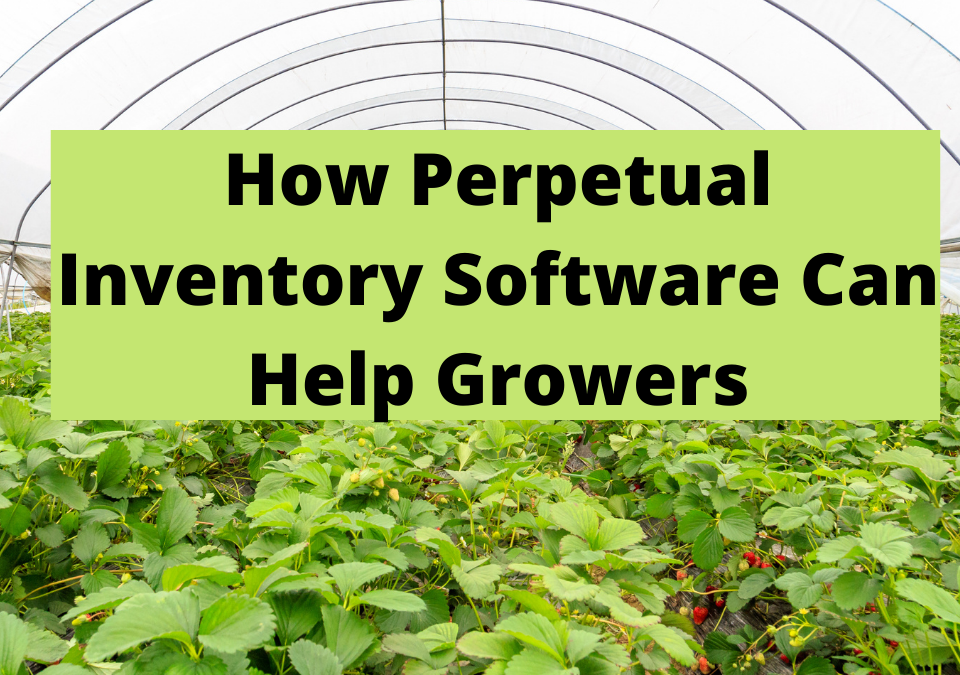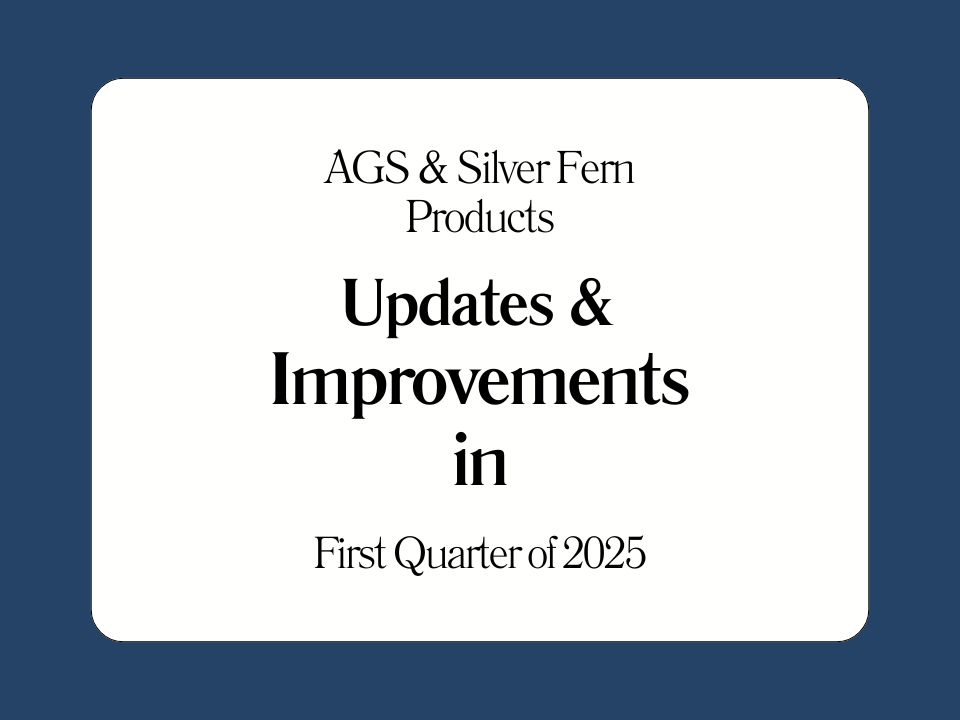
Why Growers Should Compare Time Historical Periods
May 31, 2022
The Risks Of Using Excel To Run Your Grower Operation
June 30, 2022A grower’s inventory is their most important asset.
Without inventory, there is no sales revenue.
Bad inventory practices lead to lost opportunities, higher costs, and degraded business performance.
Bad inventory management will implicitly invite your customers to shop elsewhere.
There are multiple ways a grower can manage their inventory to achieve better business results. One of the very effective, albeit rigorous, ways is using a perpetual inventory system.
What is Perpetual Inventory?
Perpetual inventory is an accounting method where any, and all, inventory impacting transactions are recorded in a ledger or software system. Tracking all transactions like this in a ledger allows a company to keep very detailed and up to date records on their inventory situation.
For growers, this means recording the receipt and consumption of raw materials, recording the production of finished goods (or bump ups) and recording the sale or scrap of those finished goods at the very least.
The Realities of Perpetual Inventory for Growers
A tale of two realities
When using a perpetual inventory system is it vital to remember that the grower is managing 2 realities – the reality in the system and the reality out in the greenhouse or nursery.
Ideally those realities stay in sync by using good software and consistent business practices and procedures that ensure employees ‘tell the system’ when inventory impacting situations occur.
However, in real life, we know that those two realities can and do get out of sync easily because the system is not told what happened in the real world – or told the wrong thing.
The Rigor Required For Good Perpetual Inventory
Rigor in record keeping
Keeping the 2 realities in sync and thus gaining the most benefit from perpetual inventory software requires rigor in your record keeping. It is important to have software support and employee practice that ‘tells the system’ what happened at the point it happens.
For example, on your receiving dock you would need a terminal or laptop to make transactional note of received goods so that the system can tell you they are there just like the receiving dock manager.

Copyright Advanced Grower Solutions
Invalid Receipt data can greatly impact your inventory accuracy
All points in your business process that impact inventory must be recorded in the system.
Rigor in the data setup
To get the most flexibility and benefit from the inventory and associated reporting, consistency and rigor in the data surrounding setup of items, bills of materials and all material movements and transactions are required.
For example, If you have multiple records in the database that were setup by different employees using slightly different item codes but that all really indicate the same thing on the nursery then your reporting from the system will never be accurate nor match the reality you can see in the field.

Copyright Advanced Grower Solutions
Examples of inconsistent product naming that will impact inventory operations
How can growers improve the rigor in their item setup?
- Manage the item creation and setup process carefully.
- Make sure and use consistent naming conventions.
- Use consistent spelling and capitalization rules.
- Remove or inactivate duplicate or incorrect items.
- Use consistent extra fields like ‘item category’ or ‘item size’ so that grouping reports will aggregate the correct records.
- Audit your items and the meta data for them regularly.
- Have a process where employees can flag or notify when item setup seems wrong.
For growers that have large item or SKU counts this can be a lot of up-front work to clean up years of issues, but it will be worth it for the improved accuracy and clarity of your data.
See our blog post on How to make your data more valuable for more details and practices to make your data more useful and valuable.
Advantages for Growers using Perpetual Inventory in Grower Software
Better view of your business
Good quality inventory data allows you to get a better view of your total operation.
Total Sales, current inventory value, costing, raw material levels and other key business metrics are much easier to report and derive with consistent, up to date data perpetual inventory data. It makes situational reporting and period comparisons much easier to generate and with the right software this can be fully automated.
Answer key questions instantly
Up to date perpetual inventory data helps you instantly answer key business questions like ‘how much of an item do we have’ in response to a new sales order query. Or ‘how much of that raw material do we need to order for next quarters production needs’. ‘How much ipomea did we scrap last month’ now becomes answerable in just a few clicks.
Better inventory control and utilization
A business professor once told me that ‘inventory is frozen cash’. To manage that frozen cash effectively, a perpetual inventory system can report on current actuals, helping you to better utilize on hand raw materials, and help you sustain better future order quantities.
In the current supply chain and inflation situation of mid-2022, it is more important than even to know accurate future order needs to maximize your cash utility.
Potential for integrated (and automated) accounting transactions
Good software for managing perpetual inventory will include the automation ‘hooks’ to record the appropriate accounting transactions to make it easier to generate certain types of financial summary records. This means less work on your back-office staff allowing them to focus on more specific improvement activities.
Better records may help relations with banks and lending institutions
Some growers that use inventory-based lines of credit must supply inventory reports and valuations to the lending institutions. A well-managed perpetual inventory system will improve the trust of the intuitions in the grower’s operation and make it easier to fulfill reporting requirements.
Better informed to take advantage of new opportunities
Having confidence in your numbers allows you to seize new opportunities when they arise or more clearly contemplate new business lines or models.
Better historical data for analytics and planning
Doing the work to maintain perpetual inventory will, over time, yield more accurate historical data. This will better inform planning and ‘what if’ analysis as the grower contemplates business changes or requests from customers.
Better views and reports for material requirements planning
Accurately knowing what you have on hand allows you to optimize your future purchases as you analyze your production plan and the commensurate raw material (or bump up) needs for future production.
Better view of your availability and what you can sell
Up to date inventory data can help you respond to new sales opportunities with confidence. When customers call about urgent purchases your up-to-date inventory system gives you instant answers as to what is truly available and can be sold.

Copyright Advanced Grower Solutions
Sample inventory Dashboard with detail view
Disadvantages of Perpetual Inventory
More record keeping effort
The business employees will have to tell the system what transactions have taken place.
Employees must be trained in the methods, screens, and devices for recording transactional data. Receipts, scrap, sales order picks and movements, deliveries etc. All transactions must be judiciously recorded, ideally as they happen.
When the system is not told what happened in reality, that bad or missing data will always yield inaccurate reporting and thereby impact decision making outcomes.
Requires cleaner data
Consistency in data takes the effort of employees, system checks and audits and validations when new items are setup.
It will take more data effort to realize the benefits of perpetual inventory and the associated automated reporting.
Systems supporting perpetual inventory are more expensive
The underlying software to manage perpetual inventory and accounting is certainly more complex. Thus, it comes at a higher prices that other less rigorous software systems.
Requires more training and business procedure definitions
Growers will need to ensure employees are trained on how to use the system to record transactions. Growers will need to make sure that employee work instructions are updated to include any additional record keeping tasks. Managers and supervisors will need to follow up, auditing work and making corrective changes to workflows or processes as issues happen. It needs to be a whole company effort.
Requires consistent operational transactional discipline
The employees must adhere to the procedures (without exception) to make sure the transactions are recorded in a timely manner.
If data entry is put off for expediency it is extremely difficult to catch up – especially in spring.
Should I use perpetual Inventory for my grower software?
The advantages of a well maintained perpetual inventory system can be compelling for a grower.
Ultimately, whether a grower chooses to use perpetual inventory for their operation depends on several factors unique to the grower’s situation, goals, and operation type. It also depends on the operational software you use, the support you get from your vendors and the practices and procedures for your employees.
With the right combination of system capability, vendor support, staff training and competence and the operational practices required, perpetual inventory can bring many advantages to a grower’s operational results.
Advanced Grower Solutions can help you assess your situation and make recommendations as to what type of inventory system is best for your business. Contact us to learn more or schedule a free demo..





